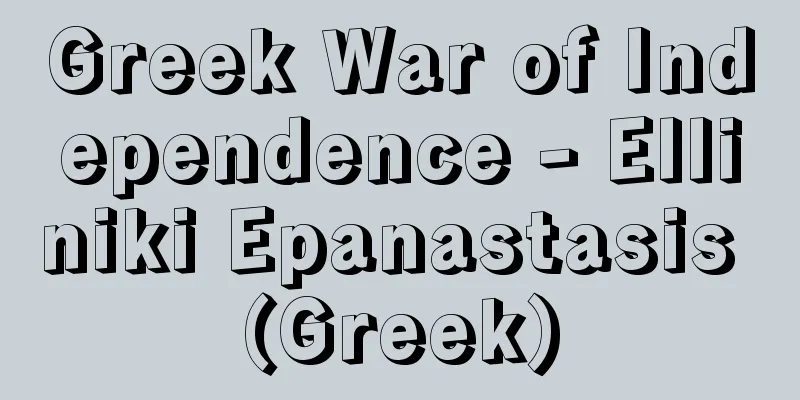Tokyo Round - Tokyo Round (English)

|
GATT (the predecessor of the World Trade Organization, or WTO), which was established after the Second World War, conducted several trade and tariff negotiations up until the 1960s, based on the basic principle of liberalizing trade and applying it to member countries on a non-discriminatory basis. The most successful of these negotiations was the sixth round, known as the Kennedy Round, which led to a significant reduction in tariffs and a major advance in the free trade system. However, in the 1970s, protectionism rose due to the relative decline in the economic power of the United States, while the European Community (EC, the predecessor of the EU, or European Union) also showed a stronger tendency toward regionalization. The GATT system was shaken by the growing protectionist atmosphere in the world economy. Under these circumstances, and at the initiative of Japan, Canada, and other countries, a multilateral trade negotiation, known as the Tokyo Round or New International Round, was launched based on a resolution of the GATT Ministerial Conference held in Tokyo in 1973. Its goal was to promote the expansion and liberalization of world trade to improve the welfare of each country, particularly to expand trade and ensure the benefits to developing countries, and the basic philosophy was the same as that of the Kennedy Round. However, the negotiating issues that were emphasized in the Tokyo Round included the reduction or abolition of non-tariff barriers that were left over from the Kennedy Round, clarification of the monitoring system and activation requirements for safeguard measures that were at risk of being abused in a protectionist atmosphere, how to harmonize general goals with the special characteristics of agriculture, and how to give priority to tropical products in relation to the economic development of developing countries. Initially, the goal was to complete the negotiations by the end of 1975, but after some twists and turns, such as the first oil crisis occurring shortly after the negotiations had begun and a temporary halt to the negotiations, the major countries finally managed to sign the agreement six years later in 1979. The negotiations were conducted in several groups, and it was decided that tariffs on industrial products in the major countries would be reduced by an average of about 33% over an eight-year period starting in 1980. Eight agreements were produced regarding non-tariff barriers, including an agreement prescribing the conditions for imposing countervailing duties and measures related to subsidies, and an agreement clarifying the conditions for imposing anti-dumping duties. Other achievements included the reduction of tariffs on tropical products and the acceptance of special preferential treatment for developing countries, but disagreement among countries over the selective application of clarification of the conditions for imposing emergency import restrictions and the creation of disciplines on multilateral safeguards that would stipulate a monitoring system for these restrictions meant that no agreement was reached. [Akira Shida] "The Tokyo Round: The International Trade System of the 1980s, by Tsuta Nobuhiko (1979, Newton Press)" ▽ "Trade Rules of the 1980s: Everything about the Tokyo Round, edited and published by the Nihon Keizai Shimbun Inc. (1979)" ▽ "The Complete Picture of the Tokyo Round, edited by the Tokyo Round Study Group (1980, Japan Customs Association)" ▽ "Collection of Agreements Related to the Tokyo Round, edited and published by the Japan Customs Association (1980)" ▽ "From GATT to the WTO: A Modern History of Trade Friction, by Ikeda Michiko (Chikuma Shinsho)" [References] | | | |Source: Shogakukan Encyclopedia Nipponica About Encyclopedia Nipponica Information | Legend |
|
第二次世界大戦後に成立したガット(世界貿易機関=WTOの前身)は、原則として貿易を自由化し加盟国間にそれを無差別に適応するという基本理念に従って、1960年代まで数回の貿易・関税交渉を行ってきたが、そのなかで最大の成果が得られた交渉が、ケネディ・ラウンドとよばれる第6回の交渉であり、それによって関税は大幅に引き下げられ、自由貿易体制は大きく前進した。しかし70年代に入ると、アメリカの相対的な経済力の低下により保護主義が台頭し、一方ヨーロッパ共同体(EC。EU=ヨーロッパ連合の前身)でも地域主義化の傾向を強めるなど、世界経済の保護主義化の気運のもとでガット体制は動揺した。このような背景のもとに、日本やカナダなどのイニシアティブによって、73年に東京で開催されたガット閣僚会議の決議に基づいて開始されたのが、東京ラウンドまたは新国際ラウンドとよばれる多角的貿易交渉である。 その目標は、世界貿易の拡大と自由化を推進して各国の福祉を向上すること、とくに開発途上国の貿易の拡大とその利益を確保することなど、基本的な理念はケネディ・ラウンドのそれと同じであるが、東京ラウンドで重点が置かれた交渉課題は、ケネディ・ラウンドで残された非関税障壁の軽減や廃止の問題、保護主義の気運のなかで乱用のおそれのあるセーフガード措置の監視体制や発動要件の明確化の問題、一般的な目標と農業の特殊性をどう調和させるかという問題、開発途上国の経済発展との関連で熱帯産品をどう優先的に取り扱うかという問題、などであった。 当初は1975年中に終了することを目ざしたが、開始直後に第一次の石油危機が発生して交渉は一時中断されるなどの曲折を経て、約6年後の79年に主要諸国は調印にこぎ着けた。交渉はいくつかのグループに分かれて行われ、関税については、主要諸国の工業品の関税率は80年から8年間にわたって平均で約33%引き下げることが決定された。非関税障壁については、相殺関税の発動要件や補助金に関する措置を規定した協定、ダンピング防止税の発動要件を明確化した協定など、八つの協定が生まれた。そのほかでは、熱帯産品の関税引下げや開発途上国に対する特別優遇措置の容認などの成果もあるが、緊急輸入制限の発動要件の明確化やその監視制度を規定する多角的なセーフガードに関する規律の作成については、その選択的適用をめぐって各国の意見が対立し、合意するまでには至らなかった。 [志田 明] 『蔦信彦著『東京ラウンド――80年代の国際貿易体制』(1979・ニュートンプレス)』▽『日本経済新聞社編・刊『80年代の貿易ルール――東京ラウンドのすべて』(1979)』▽『東京ラウンド研究会編『東京ラウンドの全貌』(1980・日本関税協会)』▽『日本関税協会編・刊『東京ラウンド関係協定集』(1980)』▽『池田美智子著『ガットからWTOへ――貿易摩擦の現代史』(ちくま新書)』 [参照項目] | | | |出典 小学館 日本大百科全書(ニッポニカ)日本大百科全書(ニッポニカ)について 情報 | 凡例 |
<<: Tokyo University of Science
Recommend
injector
...However, it was not until the 20th century tha...
Vasilii Makarovich Shukshin
1929‐74 Soviet novelist, film director, and actor....
Band spectrum
…When an electronic state is excited, vibrational...
Shogun's Estate - Kubogoryosho
The territories and positions that brought economi...
Yaroslavl' (English spelling)
The capital of Yaroslavl Oblast in western Russia....
Roszak, T.
...The counterculture was carried by the New Left...
Dutch literature
It was during the 12th and 13th centuries that a ...
Hemigrapsus penicillatus (English spelling) Hemigrapsuspenicillatus
… [Takeda Masatomo]. … *Some of the terminology e...
American Milky - American Milky
…In the Chinese herbal medicine, the Xishi tongue...
Danevirke (English spelling)
A group of earthworks running roughly east-west al...
Study
…These monastery and church architecture in the r...
Cryptobranchus alleganiensis (English spelling)
…A special national natural monument. Closely rel...
Zenith distance - zenith distance
The angle measured along a great circle from the z...
Spheroidal graphite cast iron - spheroidal graphite cast iron
…When the activity of oxygen contained in this ca...
Maghāzī (English spelling)
… [The Birth of the Historical Narrative Akhbar] ...









